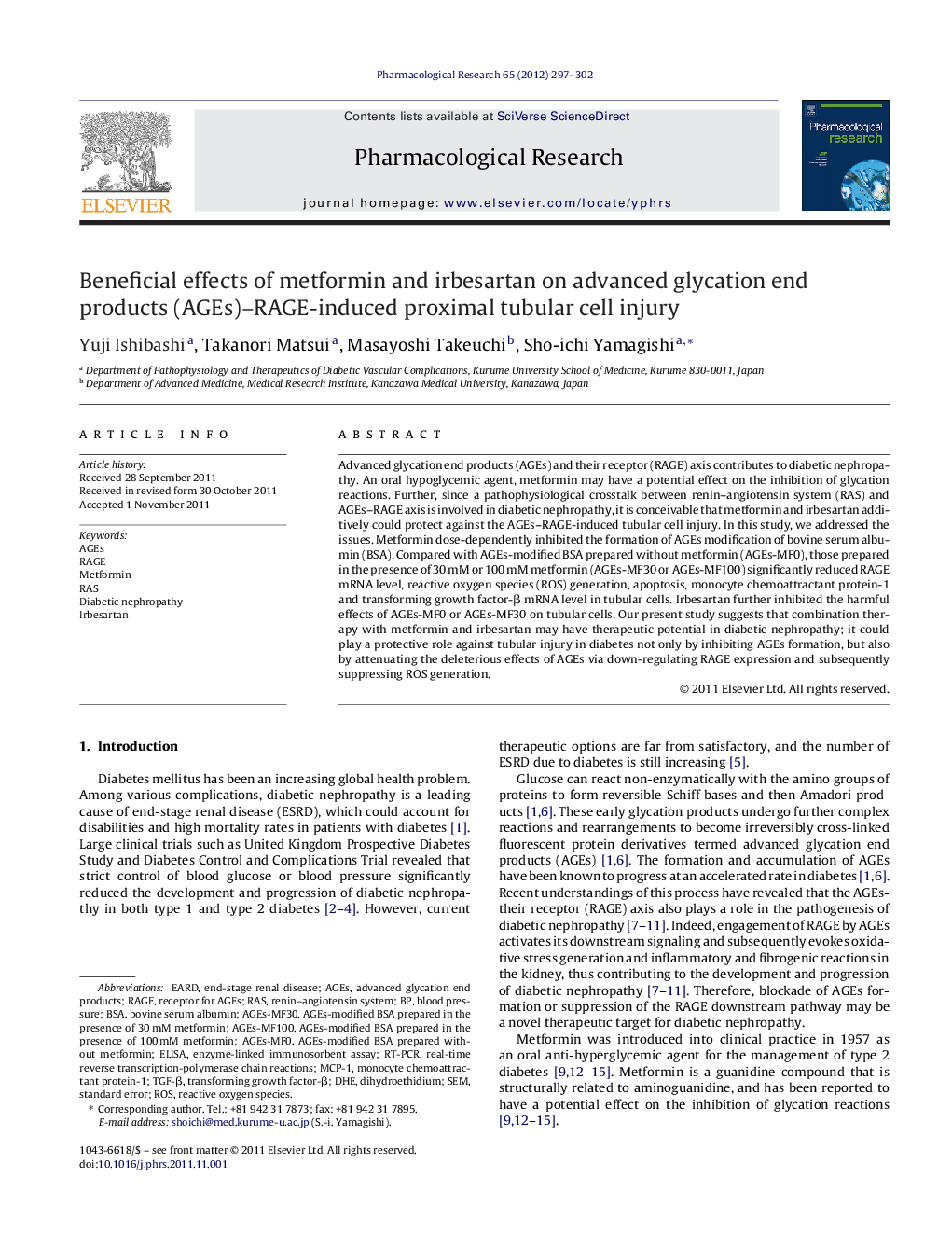| Article ID | Journal | Published Year | Pages | File Type |
|---|---|---|---|---|
| 2561620 | Pharmacological Research | 2012 | 6 Pages |
Advanced glycation end products (AGEs) and their receptor (RAGE) axis contributes to diabetic nephropathy. An oral hypoglycemic agent, metformin may have a potential effect on the inhibition of glycation reactions. Further, since a pathophysiological crosstalk between renin–angiotensin system (RAS) and AGEs–RAGE axis is involved in diabetic nephropathy, it is conceivable that metformin and irbesartan additively could protect against the AGEs–RAGE-induced tubular cell injury. In this study, we addressed the issues. Metformin dose-dependently inhibited the formation of AGEs modification of bovine serum albumin (BSA). Compared with AGEs-modified BSA prepared without metformin (AGEs-MF0), those prepared in the presence of 30 mM or 100 mM metformin (AGEs-MF30 or AGEs-MF100) significantly reduced RAGE mRNA level, reactive oxygen species (ROS) generation, apoptosis, monocyte chemoattractant protein-1 and transforming growth factor-β mRNA level in tubular cells. Irbesartan further inhibited the harmful effects of AGEs-MF0 or AGEs-MF30 on tubular cells. Our present study suggests that combination therapy with metformin and irbesartan may have therapeutic potential in diabetic nephropathy; it could play a protective role against tubular injury in diabetes not only by inhibiting AGEs formation, but also by attenuating the deleterious effects of AGEs via down-regulating RAGE expression and subsequently suppressing ROS generation.
Graphical abstractFigure optionsDownload full-size imageDownload as PowerPoint slide
